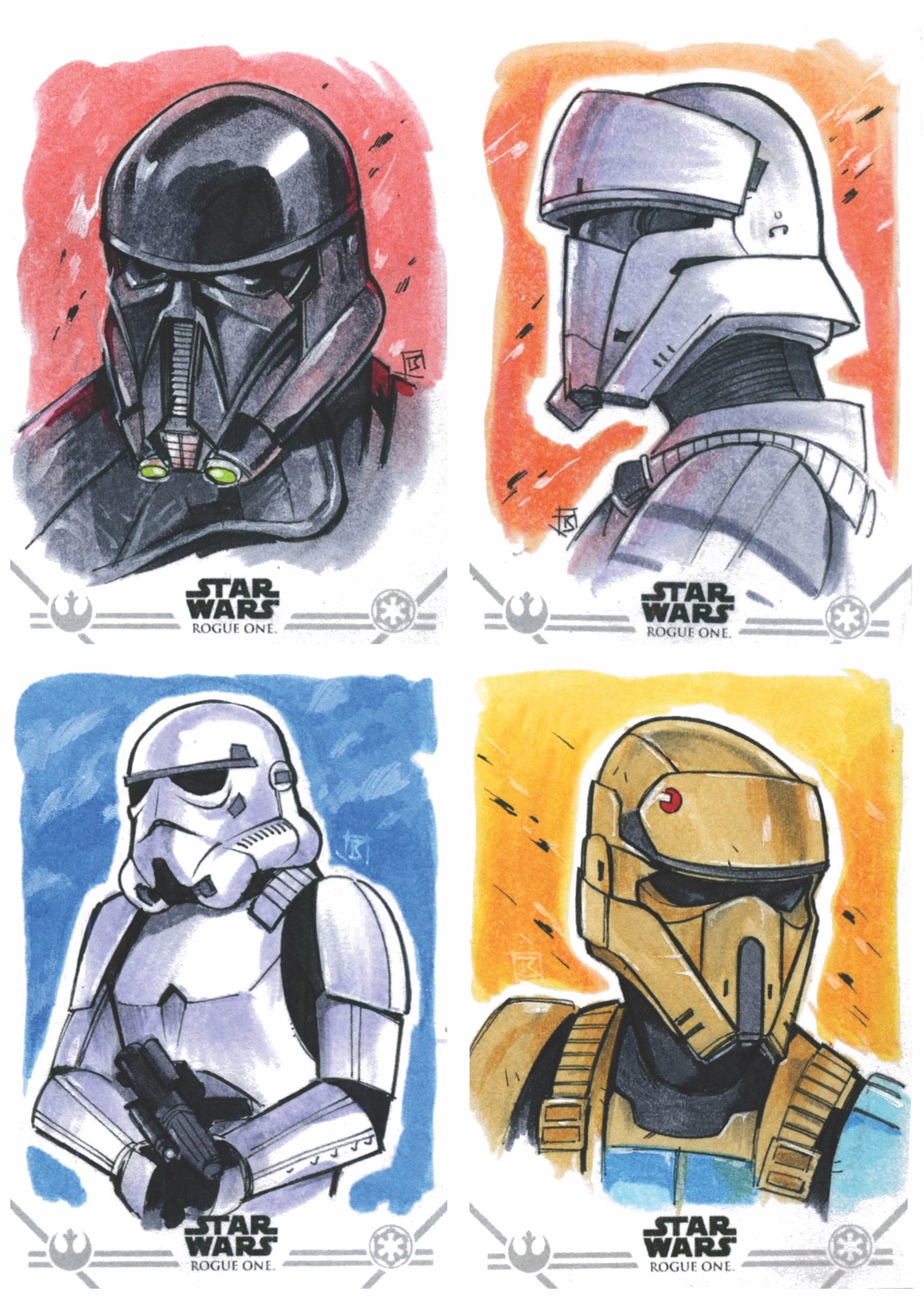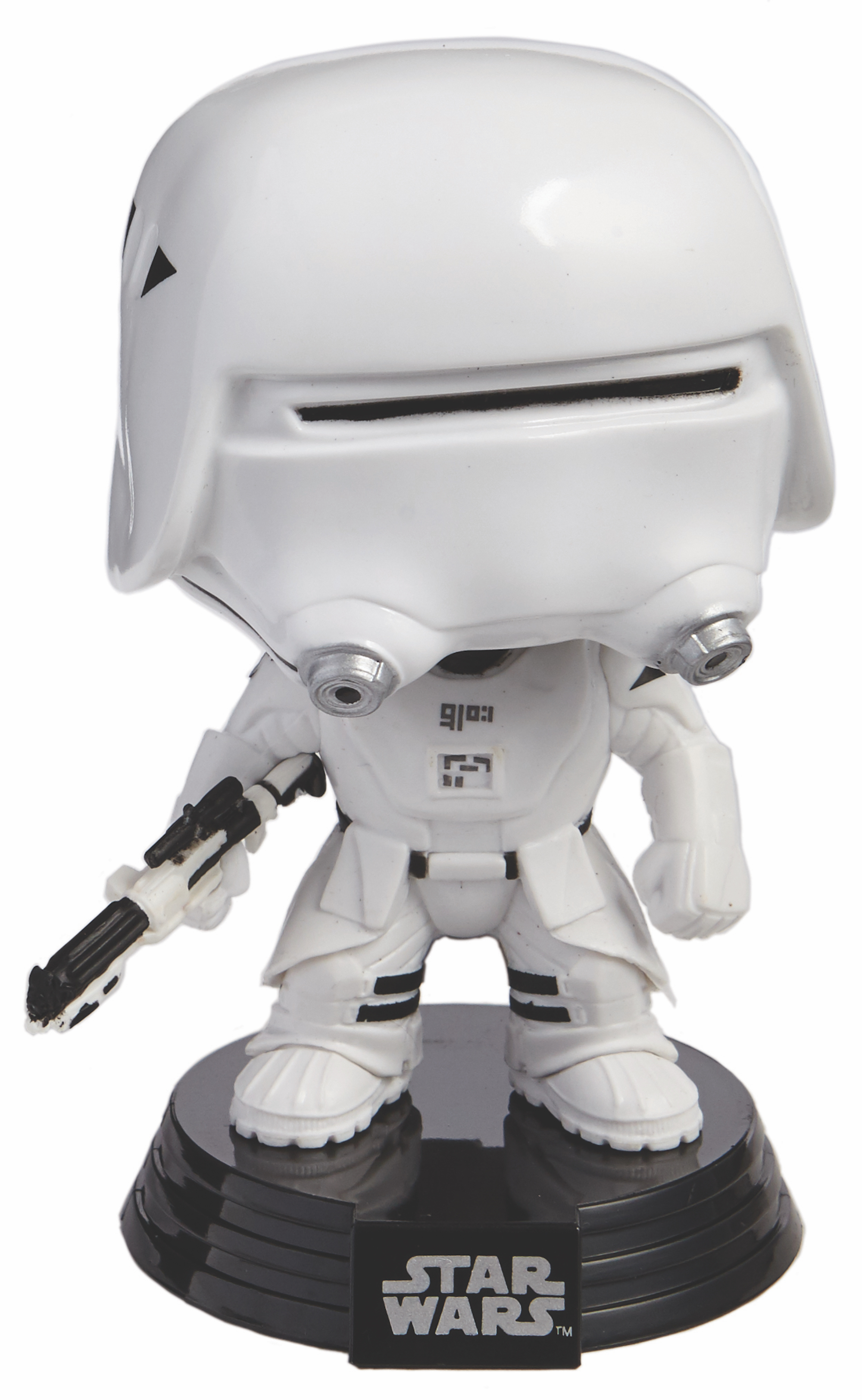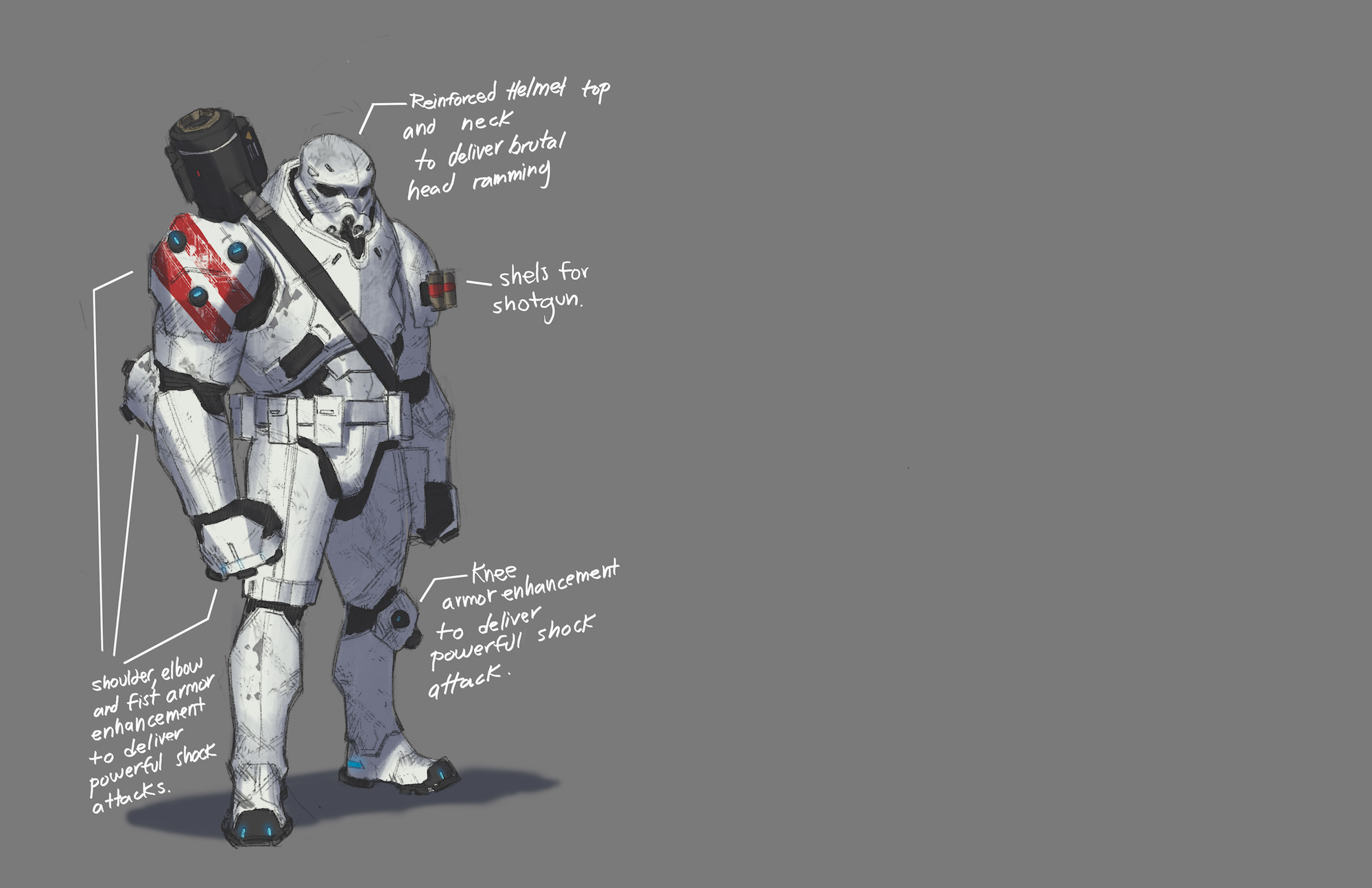With The Last Jedi hitting theaters this Friday, the Star Wars franchise is taking its turn in the spotlight once again. As fans everywhere anticipate the film’s release, the fantastic new book Star Wars Stormtroopers: Beyond the Armor is providing a deep dive into the evolution of one of its most iconic characters: Stormtroopers. From the nameless, faceless versions of the original 1977 Star Wars to John Boyega’s unmasking as Finn in The Force Awakens, there’s a whole lot more going on under the helmet than even the most diehard fans might expect.
Are they humans, droids, or clones? Does each Stormtrooper have their own identity, name, haircut, tattoos, and personality? How did they even come to be? To get the 411, I talked to the authors of the oversize, coffee-table-style tome, Ryder Windham and Adam Bray, to learn about how the seemingly unlimited supply of soldiers represents a universal symbol of oppression, how Ralph McQuarrie’s original concept designs evolved into characters, comics, and toys, and how Stormtroopers became the unofficial symbols of Star Wars:
Videos by VICE

VICE: How did you get involved in the project?
Adam Bray: This was actually sort of a sequel—but not quite—to a previous book that my co-writer had done about Darth Vader. The publisher needed a second author, and the previous executive editor at Lucasfilm, John Rinzler, recommended me for the project. We got started just before The Force Awakens hit theaters—I was involved on and off for about two years.
Ryder Windham: I enjoyed working on the Vader book, so I jumped at the opportunity to write about Stormtroopers.

How much material did you have access to?
I’ve been working on Star Wars books for over 20 years, and I have an extensive library of books and magazines. I also interviewed artists and writers who were influential in the development of Stormtroopers as they appeared on screen and in comic books. My editor had access to Lucasfilm’s archives, and she found most of the images that I requested.

How do the early concepts and artwork for the Stormtroopers match up to what was on-screen?
Bray: The original designs that Ralph McQuarrie did were pretty retro. There was a bit of evolution—even in the original Star Wars movie—but recent merchandise has gone back to the old designs. You’ll see things in the new Star Wars projects that actually go back to the unused original designs that they made. In Star Wars Rebels, they have a new class of Imperial Drivers that drive the troop transports and stylized walkers—those come from McQuarrie’s unused designs. In Rogue One, the Death Troopers aren’t an exact copy of McQuarrie designs, but they’re based off his original ideas—a combination of his early Stormtroopers, and early Darth Vader ideas that didn’t get used.

Do you think the newly introduced Finn is taking the Stormtrooper dialogue in a different direction?
Yeah—it’s the first time in a movie where we actually see the Stormtrooper take his helmet off and become humanized. It’s something that Lucasfilm has been very conscious of, especially in modern Star Wars projects—not to take their helmets off. They intentionally try to keep their identities obscured, but with Finn we actually see a real person unmasked, and that’s part of his own personal seeking of redemption—trying to change his life, and finding a new path.

How did Stormtroopers become the face of Star Wars?
In many ways, they always have been. They’re the iconic soldiers of the Empire. Between them and Darth Vader, they’ve been one of the most recognizable symbols of Star Wars. Each new movie or animated series tries to introduce some new troopers into the list, and of course we have some new ones coming with the new movie: the Executioner Troopers. They try to evolve a little and broaden it with each new project. I think they’ll continue to remain one of the fundamental designing features of Star Wars—even in the new Han Solo movie, I’d expect to see some new troopers.

The Stormtroopers always reminded me of the Nazis: perfectly mechanical soldiers. Do you think that was Lucas’s intention?
George Lucas’s original intention for the Empire was that they were the villains. They’re not tolerant, they’re oppressive. All the Imperials are white, British men. I think, artistically, there’s an attempt to show that they’re very Imperial and intolerant.

What surprised you the most with working on the book?
Windham: The response to the book’s publication has been phenomenal. I was confident that Star Wars fans would enjoy the book, but many members of 501st Legion [an international group of Stormtrooper costumers] have told me they’ve been craving a book like this for years.
Bray: I learned a lot about the toys, and how important they’ve been to not only Star Wars, but to the development of the Stormtrooper. One of the first animated series since the prequel was The Clone Wars animated series that appeared on the Cartoon Network. It was actually Hasbro who got that animated series started. They came to Lucasfilm and said, “Hey, we want to keep Star Wars going between these sequel movies to continue to sell the toys. We’ve got this idea for this animated series that follows the clone troopers during the war, and a great director that we’ve already worked with on other series. Here’s our designs on what the clone troopers could look like, and here’s some toys we’d like to do.”
In Star Wars Rebels, the animation style was based on the original Kenner action figures from the 1980s. Hasbro actually bought Kenner about 15 years ago. The Stormtrooper action figures from the 1980s are what the Rebels are based on. Those were the design templates that they based the style for everything else on in the animated series. It’s interesting that I keep finding examples of the way that the toys were actually affecting the contemporary Star Wars.

What takeaways do you want readers to come away with after reading your book?
Windham: I hope readers will appreciate that Stormtroopers didn’t just materialize from out of nowhere. Concept artist Ralph McQuarrie created the look of Stormtroopers for Star Wars: A New Hope. Brian Muir sculpted the original Stormtrooper armor, the late Liz Moore sculpted the original helmet, and Star Wars fans should give them all the credit they deserve. My co-author wrote the sections in the book about the 501st Legion, the international non-profit charitable organization for Stormtrooper costumers, and I hope fans will support the 501st too.
Bray: I hope they learn something—and I think they will, if they’re just casual fans or hardcore members of the 501st. It’s my hope that people will learn the history and behind-the-scenes. It’s a nostalgia draw for people that grew up with Star Wars. I hope it gets them more excited about the films, the movie-making process, costuming, and what went into making these films.

Is this book the be-all and end-all on Stormtroopers?
Windham: No, this book is only the end-all for now. As I understand things, Disney-Lucasfilm will be producing Star Wars movies indefinitely, so there’ll probably never be a complete history of Star Wars and Stormtroopers. The history is ongoing, and Stormtroopers are forever.
Follow Seth Ferranti on Twitter.




